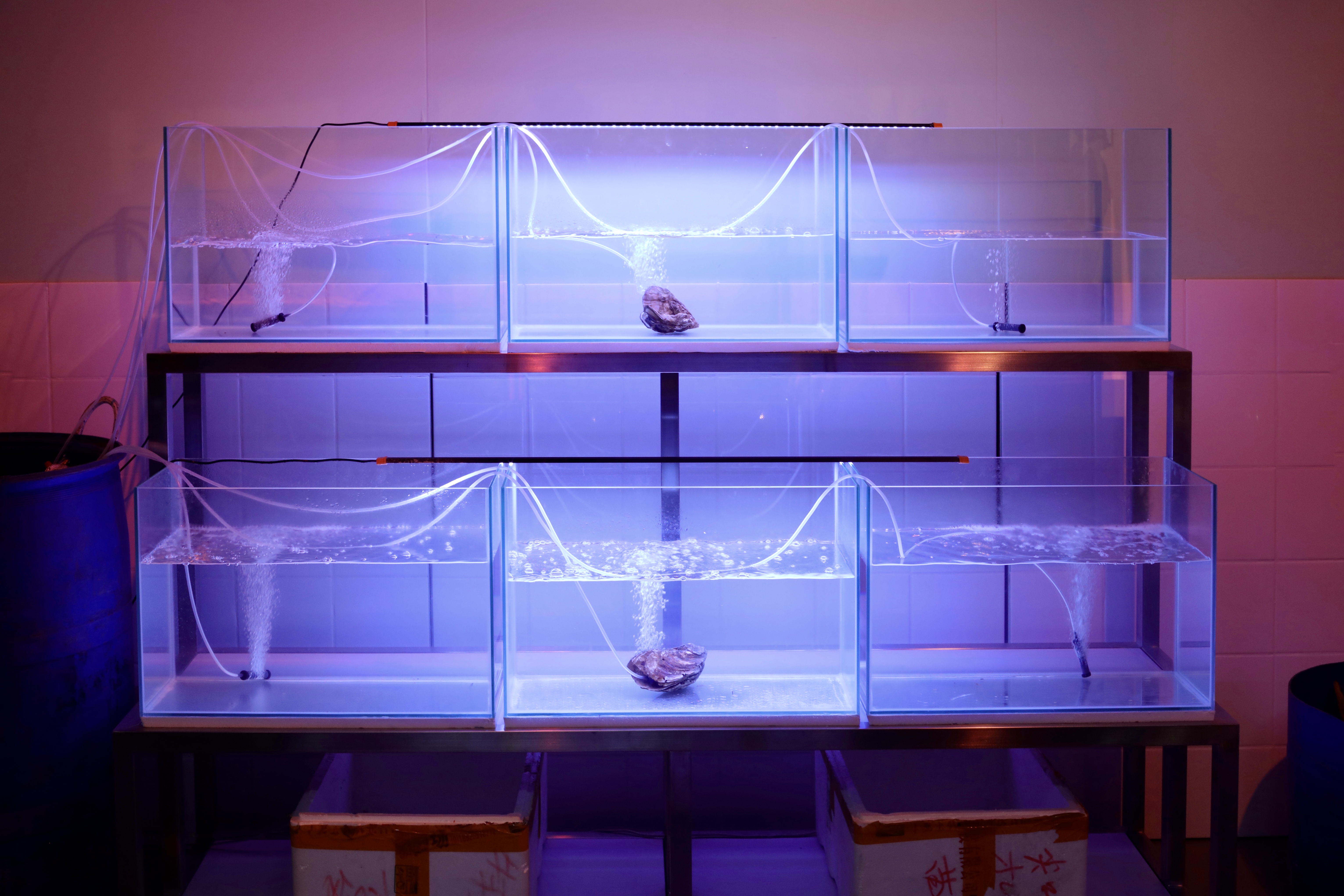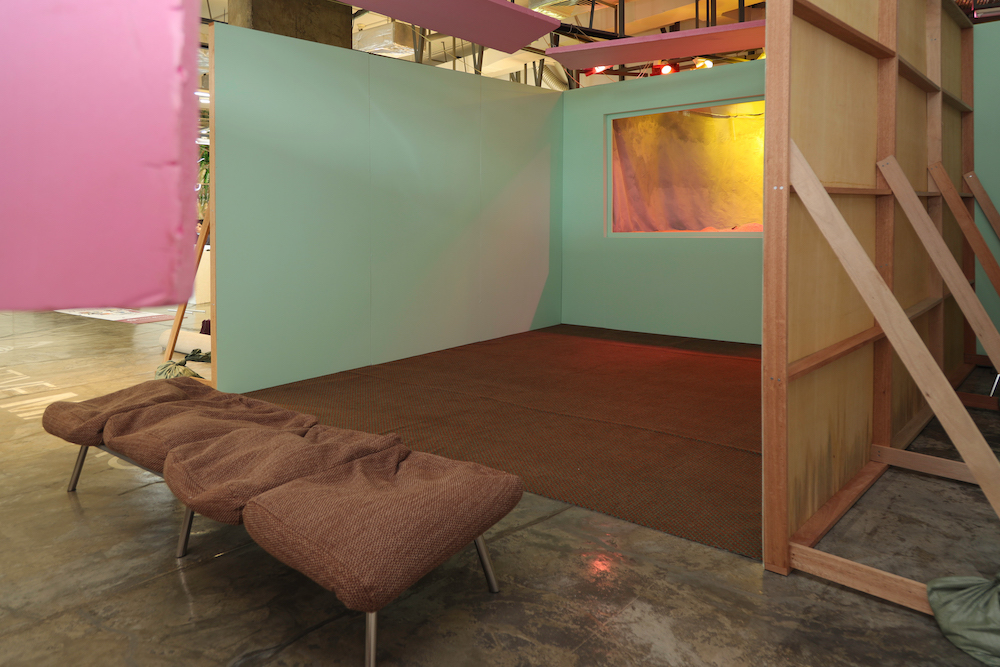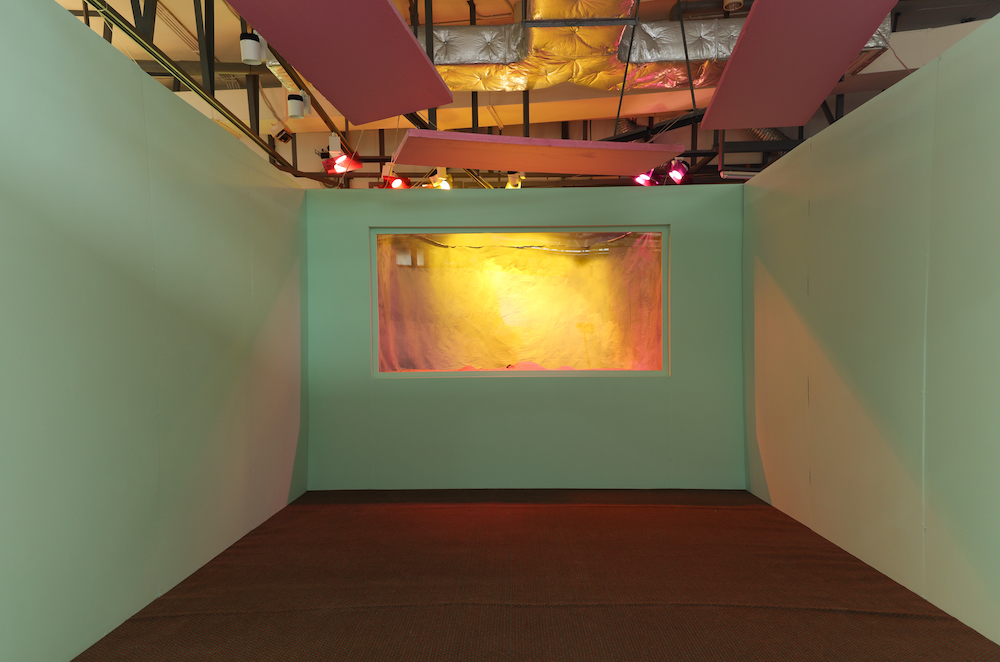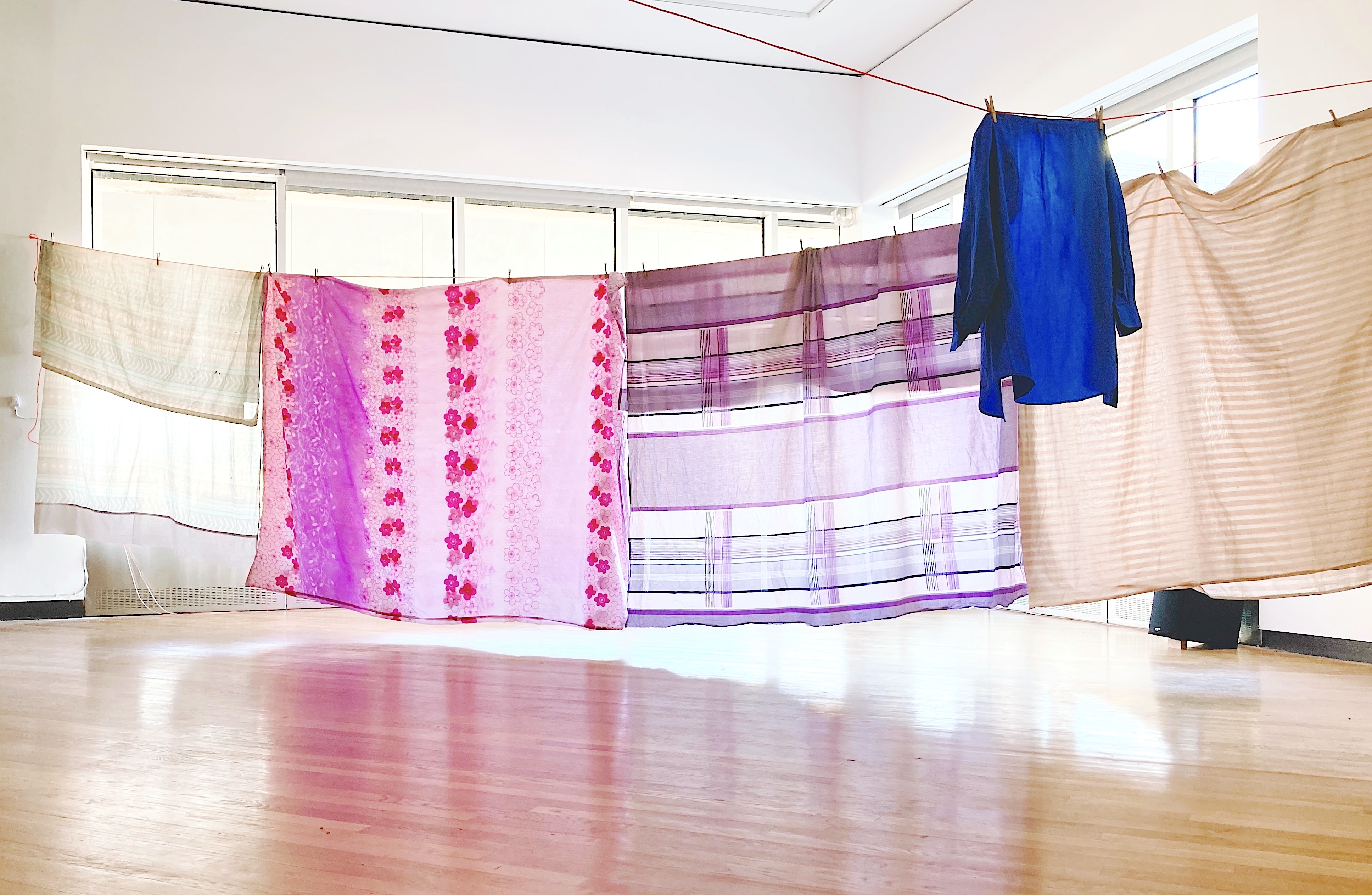Sea City Clam Tower
海市蜃樓


Sea City Clam Tower is a sound installation that takes its inspiration from the Chinese phrase for mirage, 海市蜃樓 “Hoi Si San Lau.” The breath of clam-like creatures was once believed to create visions of Penglai, the mythical island home of the immortals. In the installation, an ambient soundscape links underwater acoustics with sounds reflecting Macao’s relationship with the sea and its traditional fishing industry. Physical materials from Macao’s Inner Harbor, wet markets and local seafood restaurants are contrasted with dreamy mirages created through the projection of 3d animated fish and other local seafood. An aeration system brings a further layer of play between the virtual projected images, the movement of the water and bubbles that evoke the breath of clams.
The installation creates an otherworldly ambiance and opportunity to consider Macao’s history and its future development. It hints at environmental changes on the horizon, such as those arising from land reclamation, commercial fishing and other forces impacting the marine environment.
This installation is included in the Art Macao: Macao International Art Biennale 2021.
Artists: Crystal W. M. Chan and Benjamin Kidder Hodges
Material: Fish tank, air pump, tubes, Styrofoam containers, barrels, wood flats, audio devices, projected 3D animation
Dimentions: variable
Year: 2021
Venue: Macao Contemporary Art Center - Navy Yard No.1
Supporting article:
ATMOSPHERIC VISIONS:
Mirages, methane seeps and ‘clam-monsters’ in the Yellow Sea
- by Benjamin Kidder Hodges (tablechairwall.com)
Mountain Surrounded by Sea
被海包圍的山





History of Land Reclaimation in Macau:
In Chinese, the character 島 (pronounced “Dou” in Cantonese) translates as “island,” it’s logographic characters form “bird on top of a mountain”, and represent a “mountain surrounded by sea”. An island is a place people run to and from which they escape.
This exhibition is a sound and installation work that centres on the ‘Macau New Urban Zone’ project which consists of five new islands currently being constructed through land reclamation in Macau. This special administrative region of China and (modified) archipelago at the mouth of the Pearl River Delta is bound by tight geographical constraints so has historically expanded through land reclamation. A new development project has been launched to specifically meet the future housing and infrastructure needs of the growing population. In the exhibition, two sculptural works and a unifying sound art piece evoke the affective landscape of these developments by highlighting the tension between environmental concerns and desires for new public and private space.
In the history of Macau’s development, land reclamation has played a significant role. Macau was once a fishing village but its population has increased throughout history due to various reasons. In 1557, the Portuguese came and made Macau the first trading port between Europe and China. Since the nineteenth century, people fled from mainland China to Macau in a few different waves, during the Opium War, World War II, and the Cultural Revolution. Refugees also came from South East Asia because of Anti-Chinese movements and for other opportunities. Macau is also a place to which people escape for other reasons from leisure to work. Given that the sea around Macau is shallow and the size of Macau is small, the idea of expanding by reclaiming land seems inevitable. In 1863, the first land reclamation project was undertaken by the Portuguese government. Nowadays, two-thirds of the land in Macau is reclaimed land and reclamation remains an ongoing project.
Supporting article:
LOOKING AT THE SEA THROUGH A WINDOW
Land reclamation and installation art in Macao, China
- by Benjamin Kidder Hodges (tablechairwall.com)
Mountain Surrounded by Sea is a collaborative sound and art installation by Crystal Chan and Benjamin K. Hodges at Creative Macau from May 19, 2020 to June 6th, 2020.
This exhibition contains two parts:
5.0 Surround sound:
The surround sound is meant to bring an atmosphere of the city, sounds recorded in a typical dim sum restaurant, on the bus, and on the street are combined with improvised original music. This sound piece is roughly 2 hours long and is played through five transducer speakers made of pink insulation foam which are installed above and behind to create an immersive experience.
Duration: 01:51:06
1. Yum Cha 00:00:00
2. The Next Stop is… 00:15:00
3. Lament 00:25:00
4. Farewell 00:40:00
5. The Fish in the Aquarium 00:55:56
6. Ilha Verde 01:00:36
7. Ilha da Montanha 01:16:40
8. The Sun Climbing Off the Mountain 01:25:30
9. Unmoored 01:44:00
The installation:
On one side of the exhibition venue, there are stage flats painted in a pale green, which is a typical domestic house color in Macau. Together with a patterned carpet on the floor, this set recreates an imagined Macau apartment. With these flats and a fake window, a domestic interior space is created to imply the home that people are trying to build on the newly reclaimed land. Behind the window, there is a sand mountain. The sand mountain is a scene taken from the current reclamation projects along Macao’s shores.
On the other side of the room, there are styrofoam containers filled with water and a projection from the ceiling onto the surface of the water. Styrofoam containers are used by fishermen to keep their catch fresh. These containers are also commonly used in front of seafood restaurants to display fresh seafood from which customers can choose. 3d animated seafood is projected on the water. The interaction of the 3d animation and the surface of the water to represent the disturbance of the environment during reclamation.
Makeshift Home
臨時房屋



